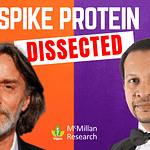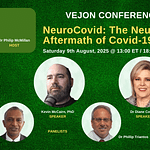Prior elevation of interleukin 10 (IL-10) seems to be a risk factor for developing persistent fatigue type symptoms.
My approach is not just to target symptoms of long COVID, but to identify and address the primary pathophysiology, such as chronic inflammation and immune dysregulation. By understanding these root causes, we can effectively mitigate predispositions and reduce the impact of long COVID in the future.
Interleukin-10 (IL-10) is an important cytokine with anti-inflammatory properties, which plays a crucial role in regulating the immune system. This is done by limiting immune responses to pathogens and preventing damage to the body.
The main cell type to chronically produce IL-10 are regulatory T and B cells. This fits with our prior research into the mechanisms of long covid being related to prior subclinical inflammatory issues.
Covid Long Haul - Infection and Vaccination
The first module in the long haul presentation. Please take a listen and clarify where gaps may be in the presentation. It includes comments and input from the vaccine damaged community. It will only be available free for a short time. Register for the FULL FREE Course here >
Highlights of Paper
Baseline fatigue is not associated with the development of persistent fatigue after IFN-α.
IFN-α-induced persistent fatigue is associated with increased baseline IL-10.
Patients who develop persistent fatigue experience greater increases in IL-6 and 10 in response to IFN-α.
Persistently fatigued patients recover at a similar rate, but from a more severe acute response to the initial trigger.
Once established, neither the persistent fatigue phenotype, nor CFS, are associated with peripheral immune activation.
Russell, Alice, et al. "Persistent fatigue induced by interferon-alpha: a novel, inflammation-based, proxy model of chronic fatigue syndrome." Psychoneuroendocrinology 100 (2019): 276-285.














